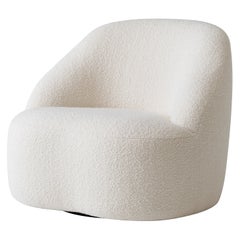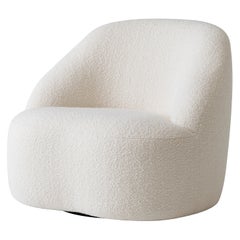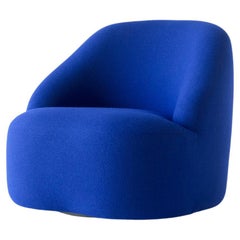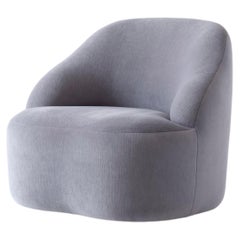Margas Lc2
21st Century and Contemporary Lithuanian Scandinavian Modern Lounge Chairs
Fabric
21st Century and Contemporary Lithuanian Scandinavian Modern Lounge Chairs
Fabric
21st Century and Contemporary Lithuanian Scandinavian Modern Lounge Chairs
Fabric
21st Century and Contemporary Lithuanian Scandinavian Modern Lounge Chairs
Fabric
21st Century and Contemporary Lithuanian Scandinavian Modern Lounge Chairs
Fabric
People Also Browsed
2010s Scandinavian Modern Chandeliers and Pendants
Brass, Bronze
21st Century and Contemporary Italian Mid-Century Modern Chandeliers and...
Onyx, Brass
2010s Canadian Modern Wall Lights and Sconces
Brass
2010s Chandeliers and Pendants
Metal
21st Century and Contemporary Mexican Mid-Century Modern Table Lamps
Fiberglass, Linen, Fabric, Wood
2010s Italian Modern Chandeliers and Pendants
Metal, Brass
21st Century and Contemporary French Modern Chairs
Steel
21st Century and Contemporary American Wall Lights and Sconces
Metal, Brass, Nickel
21st Century and Contemporary American Scandinavian Modern Wall Lights a...
Nickel, Brass
21st Century and Contemporary American Chandeliers and Pendants
Brass
21st Century and Contemporary Portuguese Modern Benches
Velvet, Wood, Lacquer, Fabric
21st Century and Contemporary Italian Modern Coffee and Cocktail Tables
Blown Glass
21st Century and Contemporary Belgian Side Tables
Sandstone
21st Century and Contemporary British Organic Modern Wall Lights and Sco...
Plaster
21st Century and Contemporary Swedish Mid-Century Modern Table Lamps
Textile
2010s Danish Scandinavian Modern Dining Room Chairs
Oak
Louise Liljencrantz for sale on 1stDibs
Award-winning designer Louise Liljencrantz looks to a range of inspirations to create furniture that introduces a sense of intimacy and belonging in a space. The lines of her shapely coffee tables, lounge chairs and other pieces draw on forms found in the natural world, and her distinctive interior design projects evoke the timeless quality and essence of the Scandinavian modern style.
Liljencrantz credits designers and architects from all over the world with having influenced her work, including notable figures such as Italian architect and designer Carlo Scarpa, American designer and artist Donald Judd, and French decorator Jean-Michel Frank, who got his start in interior design when it was little more than a burgeoning field.
Born in Sweden, Liljencrantz spent many years after high school working in the fashion industry. It wasn't until she had spent time running her own boutique that she realized she wanted to work in interior design. At 30, Liljencrantz returned to school to study graphic design.
Before she even completed her studies, Liljencrantz had landed her first project and established her own design firm in 2009. That project led to more commissions, and her career took off. Since opening her eponymous firm, Liljencrantz has created two distinct brands — Liljencrantz x K.F.K. Master Cabinetmakers and Veermakers.
The designer prides herself on her studio's uncompromising pursuit of quality through ethical design practices and rich materials, and this commitment characterizes these brands — Liljencrantz is as known for her designs for hospitality properties as much as she is for her high-gloss Chunky Cloud coffee table and other striking home accessories and furnishings made in walnut, oak or steel burned in linseed oil. The studio’s designs are made by Veermakers or handcrafted by master cabinetmakers at Karlsson Fernaeus Kemppainen Snickeri AB in Stockholm.
Find Louise Liljencrantz dining tables, coffee tables and seating on 1stDibs.
A Close Look at Scandinavian-modern Furniture
Scandinavian modernism is perhaps the warmest and most organic iteration of modernist design. The work of the designers associated with vintage Scandinavian modern furniture was founded on centuries-old beliefs in both quality craftsmanship and the ideal that beauty should enhance even the humblest accessories of daily life.
ORIGINS OF SCANDINAVIAN MODERN FURNITURE DESIGN
- Emerged in the 1930s
- Scandinavian design and Nordic design originated primarily in Denmark, Sweden, Finland, Iceland and Norway
- Introduced in the United States in mid-20th century
- Informed by the Bauhaus; influenced American mid-century modernism
CHARACTERISTICS OF SCANDINAVIAN MODERN FURNITURE DESIGN
- Bold, clean lines and simple, sturdy symmetries
- Use of natural materials — native woods such as pine, ash and beech
- Open, airy spaces
- Promotion of functionality
- Emphasis on craftsmanship; rooted in cabinetry profession and traditional construction techniques
- Minimal ornamentation (little to no embellishment)
- A neutral or light color palette owing to prominence of light woods
SCANDINAVIAN MODERN FURNITURE DESIGNERS TO KNOW
- Alvar Aalto
- Hans Wegner
- Kaare Klint
- Arne Jacobsen
- Greta Magnusson Grossman
- Finn Juhl
- Arne Vodder
- Verner Panton
ICONIC SCANDINAVIAN MODERN FURNITURE DESIGNS
VINTAGE SCANDINAVIAN MODERN FURNITURE ON 1STDIBS
The gentle, organic contours that are typical of Scandinavian design appear in the furnishings and decor created by Danish, Finnish and Swedish designers not as a stylistic gesture, but rather as a practical, ergonomic — and, as importantly, elegant — response to the human form.
Each nation produced exceptional talents in all areas of the applied arts, yet each had its forté. Sweden was home to Greta Magnusson Grossman and Bruno Mathsson — creators of the classic Grasshopper lighting series and Berlin daybed, respectively — but the country excelled most notably at ceramics. In the 1920s at the great Gustavsberg porcelain manufactory, Wilhelm Kåge introduced pieces in the Scandinavian style based on influences from folklore to Cubism; his skills were passed on to his versatile and inspired pupils Berndt Friberg and Stig Lindberg.
Likewise, Finland produced a truly ingenious Scandinavian modern furniture designer in the architect Alvar Aalto, a master at melding function and artistic form in works like the Paimio chair, created in collaboration with his first wife, Aino. Yet Finnish glassware was pre-eminent, crafted in expressive, sculptural designs by Tapio Wirkkala and Timo Sarpaneva.
The Danes excelled at chairs. Hans Wegner and Arne Jacobsen were exemplars of the country’s facility with wood, particularly teak.
Wegner created such iconic pieces as the Round chair and the Wishbone chair; Jacobsen — while the revolutionary architect and furniture innovator produced the best-selling plywood Ant chair — designed two classic upholstered pieces of the 1950s: the Swan chair and Egg chair. The list of great Danes could go on and on, including Finn Juhl, a stylistic maverick and maker of the bold Chieftain chair; Poul Kjaerholm, with his lean metal-and-rattan aesthetic; and Verner Panton, who introduced a vibrant Pop note into international design.
Today, decades after their heyday, the prolific, ever-evolving Scandinavian modernists continue to amaze and delight, and interior designers all over the world use their pieces to bring warmth to any given space.
On 1stDibs, you will note both instantly recognizable vintage Scandinavian modern chairs, sofas, rugs and tables — those that have earned iconic status over time — and many new discoveries.
Finding the Right Lounge-chairs for You
While this specific seating is known to all for its comfort and familiar form, the history of how your favorite antique or vintage lounge chair came to be is slightly more ambiguous.
Although there are rare armchairs dating back as far as the 17th century, some believe that the origins of the first official “lounge chair” are tied to Hungarian modernist designer-architect Marcel Breuer. Sure, Breuer wasn’t exactly reinventing the wheel when he introduced the Wassily lounge chair in 1925, but his seat was indeed revolutionary for its integration of bent tubular steel.
Officially, a lounge chair is simply defined as a “comfortable armchair,” which allows for the shape and material of the furnishings to be extremely diverse. Whether or not chaise longues make the cut for this category is a matter of frequent debate.
The Eames lounge chair, on the other hand, has come to define somewhat of a universal perception of what a lounge chair can be. Introduced in 1956, the Eames lounger (and its partner in cozy, the ottoman) quickly became staples in television shows, prestigious office buildings and sumptuous living rooms. Venerable American mid-century modern designers Charles and Ray Eames intended for it to be the peak of luxury, which they knew meant taking furniture to the next level of style and comfort. Their chair inspired many modern interpretations of the lounge — as well as numerous copies.
On 1stDibs, find a broad range of unique lounge chairs that includes everything from antique Victorian-era seating to vintage mid-century modern lounge chairs by craftspersons such as Hans Wegner to contemporary choices from today’s innovative designers.




